Nebulised hypertonic saline solution for acute bronchiolitis in infants
- PMID: 37014057
- PMCID: PMC10072872
- DOI: 10.1002/14651858.CD006458.pub5
Nebulised hypertonic saline solution for acute bronchiolitis in infants
Abstract
Background: Airway oedema (swelling) and mucus plugging are the principal pathological features in infants with acute viral bronchiolitis. Nebulised hypertonic saline solution (≥ 3%) may reduce these pathological changes and decrease airway obstruction. This is an update of a review first published in 2008, and updated in 2010, 2013, and 2017.
Objectives: To assess the effects of nebulised hypertonic (≥ 3%) saline solution in infants with acute bronchiolitis.
Search methods: We searched the Cochrane Central Register of Controlled Trials (CENTRAL), MEDLINE, MEDLINE Epub Ahead of Print, In-Process & Other Non-Indexed Citations, Ovid MEDLINE Daily, Embase, CINAHL, LILACS, and Web of Science on 13 January 2022. We also searched the World Health Organization International Clinical Trials Registry Platform (WHO ICTRP) and ClinicalTrials.gov on 13 January 2022.
Selection criteria: We included randomised controlled trials (RCTs) and quasi-RCTs using nebulised hypertonic saline alone or in conjunction with bronchodilators as an active intervention and nebulised 0.9% saline or standard treatment as a comparator in children under 24 months with acute bronchiolitis. The primary outcome for inpatient trials was length of hospital stay, and the primary outcome for outpatients or emergency department (ED) trials was rate of hospitalisation.
Data collection and analysis: Two review authors independently performed study selection, data extraction, and assessment of risk of bias in included studies. We conducted random-effects model meta-analyses using Review Manager 5. We used mean difference (MD), risk ratio (RR), and their 95% confidence intervals (CI) as effect size metrics.
Main results: We included six new trials (N = 1010) in this update, bringing the total number of included trials to 34, involving 5205 infants with acute bronchiolitis, of whom 2727 infants received hypertonic saline. Eleven trials await classification due to insufficient data for eligibility assessment. All included trials were randomised, parallel-group, controlled trials, of which 30 were double-blinded. Twelve trials were conducted in Asia, five in North America, one in South America, seven in Europe, and nine in Mediterranean and Middle East regions. The concentration of hypertonic saline was defined as 3% in all but six trials, in which 5% to 7% saline was used. Nine trials had no funding, and five trials were funded by sources from government or academic agencies. The remaining 20 trials did not provide funding sources. Hospitalised infants treated with nebulised hypertonic saline may have a shorter mean length of hospital stay compared to those treated with nebulised normal (0.9%) saline or standard care (mean difference (MD) -0.40 days, 95% confidence interval (CI) -0.69 to -0.11; 21 trials, 2479 infants; low-certainty evidence). Infants who received hypertonic saline may also have lower postinhalation clinical scores than infants who received normal saline in the first three days of treatment (day 1: MD -0.64, 95% CI -1.08 to -0.21; 10 trials (1 outpatient, 1 ED, 8 inpatient trials), 893 infants; day 2: MD -1.07, 95% CI -1.60 to -0.53; 10 trials (1 outpatient, 1 ED, 8 inpatient trials), 907 infants; day 3: MD -0.89, 95% CI -1.44 to -0.34; 10 trials (1 outpatient, 9 inpatient trials), 785 infants; low-certainty evidence). Nebulised hypertonic saline may reduce the risk of hospitalisation by 13% compared with nebulised normal saline amongst infants who were outpatients and those treated in the ED (risk ratio (RR) 0.87, 95% CI 0.78 to 0.97; 8 trials, 1760 infants; low-certainty evidence). However, hypertonic saline may not reduce the risk of readmission to hospital up to 28 days after discharge (RR 0.83, 95% CI 0.55 to 1.25; 6 trials, 1084 infants; low-certainty evidence). We are uncertain whether infants who received hypertonic saline have a lower number of days to resolution of wheezing compared to those who received normal saline (MD -1.16 days, 95% CI -1.43 to -0.89; 2 trials, 205 infants; very low-certainty evidence), cough (MD -0.87 days, 95% CI -1.31 to -0.44; 3 trials, 363 infants; very low-certainty evidence), and pulmonary moist crackles (MD -1.30 days, 95% CI -2.28 to -0.32; 2 trials, 205 infants; very low-certainty evidence). Twenty-seven trials presented safety data: 14 trials (1624 infants; 767 treated with hypertonic saline, of which 735 (96%) co-administered with bronchodilators) did not report any adverse events, and 13 trials (2792 infants; 1479 treated with hypertonic saline, of which 416 (28%) co-administered with bronchodilators and 1063 (72%) hypertonic saline alone) reported at least one adverse event such as worsening cough, agitation, bronchospasm, bradycardia, desaturation, vomiting and diarrhoea, most of which were mild and resolved spontaneously (low-certainty evidence).
Authors' conclusions: Nebulised hypertonic saline may modestly reduce length of stay amongst infants hospitalised with acute bronchiolitis and may slightly improve clinical severity score. Treatment with nebulised hypertonic saline may also reduce the risk of hospitalisation amongst outpatients and ED patients. Nebulised hypertonic saline seems to be a safe treatment in infants with bronchiolitis with only minor and spontaneously resolved adverse events, especially when administered in conjunction with a bronchodilator. The certainty of the evidence was low to very low for all outcomes, mainly due to inconsistency and risk of bias.
Trial registration: ClinicalTrials.gov NCT01238848.
Copyright © 2023 The Cochrane Collaboration. Published by John Wiley & Sons, Ltd.
Conflict of interest statement
Linjie Zhang: declared that he has no conflict of interest. Raúl A Mendoza‐Sassi: declared that he has no conflict of interest. Claire Wainwright: declared that her institution has received funding to support participation in multiple clinical trials sponsored by Vertex Pharmaceuticals since 2009, but she has received no direct funding for this. Alex Aregbesola: declared that he has no conflict of interest. Terry P Klassen: declared that he was contracted by Alberta Research Centre for Child Health Evidence between 14 February 2004 and 3 March 2005 to conduct a clinical trial that was included in the 2022 update review (Grewal 2009).
Figures

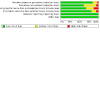

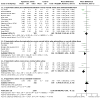
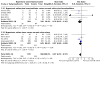
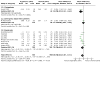
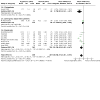
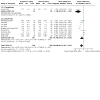
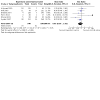

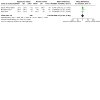
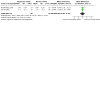
Update of
-
Nebulised hypertonic saline solution for acute bronchiolitis in infants.Cochrane Database Syst Rev. 2017 Dec 21;12(12):CD006458. doi: 10.1002/14651858.CD006458.pub4. Cochrane Database Syst Rev. 2017. Update in: Cochrane Database Syst Rev. 2023 Apr 4;4:CD006458. doi: 10.1002/14651858.CD006458.pub5. PMID: 29265171 Free PMC article. Updated.
References
References to studies included in this review
Al‐Ansari 2010 {published data only}
-
- Al-Ansari K, Sakran M, Davidson BL, Sayyed RE, Mahjoub H, Ibrahim K. Nebulized 5% or 3% hypertonic or 0.9% saline for treating acute bronchiolitis in infants. Journal of Pediatrics 2010;157(4):630-4. - PubMed
Angoulvant 2017 {published data only}
-
- Angoulvant F, Bellêttre X, Milcent K, Teglas JP, Claudet I, Le Guen CG, et al. Effect of nebulized hypertonic saline treatment in emergency departments on the hospitalization rate for acute bronchiolitis: a randomized clinical trial. JAMA Pediatrics 2017;171(8):e171333. [DOI: 10.1001/jamapediatrics.2017.1333] - DOI - PMC - PubMed
Anil 2010 {published data only}
-
- Anil AB, Anil M, Saglam AB, Cetin N, Bal A, Aksu N. High volume normal saline alone is as effective as nebulized salbutamol-normal saline, epinephrine-normal saline, and 3% saline in mild bronchiolitis. Pediatric Pulmonology 2010;45(1):41-7. - PubMed
Awang 2020 {published data only}
-
- Awang N, Nasir A, Rawi RM, Taib F. A double blind randomized controlled trial comparing treatment with nebulized 3% hypertonic saline plus salbutamol versus nebulized 0.9% saline plus salbutamol in patients with acute bronchiolitis. International Medical Journal 2020;27(3):304-7.
Bashir 2018 {published data only}
-
- Bashir T, Reddy KV, Ahmed K, Shafi S. Comparative study of 3% hypertonic saline nebulisation versus 0.9% normal saline nebulisation for treating acute bronchiolitis. Journal of Clinical and Diagnostic Research 2018;12(6):SC05-8. [DOI: 10.7860/JCDR/2018/34766.11594] - DOI
Everard 2014 {published data only}
Flores 2016 {published data only}
Florin 2014 {published data only}
-
- Florin TA, Shaw KN, Kittick M, Yakscoe S, Zorc JJ. Nebulized hypertonic saline for bronchiolitis in the emergency department: a randomized clinical trial. JAMA Pediatrics 2014;168(7):664–70. - PubMed
Grewal 2009 {published data only}
-
- Grewal S, Ali S, McConnell DW, Vandermeer B, Klassen TP. A randomized trial of nebulized 3% hypertonic saline with epinephrine in the treatment of acute bronchiolitis in the emergency department. Archives of Pediatrics & Adolescent Medicine 2009;163(11):1007-12. - PubMed
Hmar 2021 {published data only}
-
- Hmar L, Brahmacharimayum S, Golmei N, Moirangthem M, Chongtham S. Comparison of 3% saline versus normal saline as a diluent for nebulization in hospitalized children with acute bronchiolitis: a randomized clinical trial. Journal of Medical Society 2021;34:86-90.
Ipek 2011 {published data only}
-
- Ipek IO, Yalcin EU, Sezer RG, Bozaykut A. The efficacy of nebulized salbutamol, hypertonic saline and salbutamol/hypertonic saline combination in moderate bronchiolitis. Pulmonary Pharmacology & Therapeutics 2011;24(6):633-7. - PubMed
Jacobs 2014 {published data only}
-
- Jacobs JD, Foster M, Wan J, Pershad J. 7% hypertonic saline in acute bronchiolitis: a randomized controlled trial. Pediatrics 2014;133(1):e8–13. - PubMed
Jaquet‐Pilloud 2020 {published data only}
-
- Jaquet-Pilloud R, Verga M-E, Gehri M, Russo M, Gehri M, Pauchard J-Y, Russo M. Nebulised hypertonic saline therapy compared to supportive care in moderate to severe bronchiolitis: A randomized controlled trial. Swiss Medical Weekly 2017;147(Suppl 222):10-11. [CRSSTD: 20816351]
Khanal 2015 {published data only}
Köse 2016 {published data only}
Kuzik 2007 {published data only}
-
- Kuzik BA, Al Qaghi SA, Kent S, Flavin MP, Hopman W, Hotte S, et al. Nebulized hypertonic saline in the treatment of viral bronchiolitis in infants. Journal of Pediatrics 2007;151(3):266-70. - PubMed
Li 2014 {published data only}
-
- Li G, Zhao J. Effectiveness of inhaled hypertonic saline in children with bronchiolitis. Zhonghua Er Ke Za Zh 2014;25(8):607-10. - PubMed
Luo 2010 {published data only}
-
- Luo Z, Liu E, Luo J, Li S, Zeng F, Yang X, et al. Nebulized hypertonic saline/salbutamol solution treatment in hospitalized children with mild to moderate bronchiolitis. Pediatrics International 2010;52(2):199-202. - PubMed
Luo 2011 {published data only}
-
- Luo Z, Fu Z, Liu E, Xu X, Fu X, Peng D, et al. Nebulized hypertonic saline treatment in hospitalized children with moderate to severe viral bronchiolitis. Clinical Microbiology and Infection 2011;17(12):1829-33. - PubMed
Mahesh Kumar 2013 {published data only}
-
- Mahesh Kumar KB, Karunakara BP, Manjunath MN, Mallikarjuna HB. Aerosolised hypertonic saline in hospitalized young children with acute bronchiolitis: a randomized controlled clinical trial. Journal of Pediatric Sciences 2013;5(1):e174.
Mandelberg 2003 {published data only}
-
- Mandelberg A, Tal G, Witzling M, Someck E, Houri S, Balin A, et al. Nebulized 3% hypertonic saline solution treatment in hospitalized infants with viral bronchiolitis. Chest 2003;123(2):481-7. - PubMed
Miraglia Del Giudice 2012 {published data only}
-
- Miraglia Del Giudice M, Saitta F, Leonardi S, Capasso M, Niglio B, Chinellato I, et al. Effectiveness of nebulized hypertonic saline and epinephrine in hospitalized infants with bronchiolitis. International Journal of Immunopathology and Pharmacology 2012;25(2):485-91. - PubMed
Morikawa 2017 {published data only}
-
- Morikawa Y, Miura M, Furuhata MY, Morino S, Omori T, Otsuka M, et al. Nebulized hypertonic saline in infants hospitalized with moderately severe bronchiolitis due to RSV infection: A multicenter randomized controlled trial. Pediatric Pulmonology 2018;53(3):358-65. [DOI: 10.1002/ppul.23945] - DOI - PubMed
NCT01238848 {unpublished data only}
-
- NCT01238848. Efficacy of nebulized hypertonic saline in the treatment of acute bronchiolitis [A randomized controlled trial to evaluate efficacy of nebulized hypertonic saline vs. normal saline in the treatment of hospitalized children with bronchiolitis]. clinicaltrials.gov/ct2/show/NCT01238848 (first received 11 November 2010).
Ojha 2014 {published data only}
-
- Ojha AR, Mathema S, Sah S, Aryal UR. A comparative study on use of 3% saline versus 0.9% saline nebulization in children with bronchiolitis. Journal of Nepal Health Research Council 2014;12(26):39–43. - PubMed
Pandit 2013 {published data only}
-
- Pandit S, Dhawan N, Thakur D. Utility of hypertonic saline in the management of acute bronchiolitis in infants: a randomized controlled study. International Journal of Clinical Pediatrics 2013;2(1):24–9.
Ratajczyk‐Pekrul 2016 {published data only}
-
- Ratajczyk-Pekrul K, Gonerko P, Peregud-Pogorzelski J. The clinical use of hypertonic saline/salbutamol in treatment of bronchiolitis. Pediatria Polska 2016;91(4):301-7.
Sarrell 2002 {published data only}
-
- Sarrell EM, Tal G, Witzling M, Someck E, Houri S, Cohen HA, et al. Nebulized 3% hypertonic saline solution treatment in ambulatory children with viral bronchiolitis decreases symptoms. Chest 2002;122(6):2015-20. - PubMed
Sharma 2013 {published data only}
-
- Sharma BS, Gupta MK, Rafik SP. Hypertonic (3%) saline for acute viral bronchiolitis: a randomized trial. Indian Pediatrics 2013;50(8):743-7. - PubMed
Tal 2006 {published data only}
-
- Tal G, Cesar K, Oron A, Houri S, Ballin A, Mandelberg A. Hypertonic saline/epinephrine treatment in hospitalized infants with viral bronchiolitis reduces hospitalization stay: 2 years experience. Israel Medical Association Journal 2006;8(3):169-73. - PubMed
Teunissen 2014 {published data only}
-
- Teunissen J, Hochs AH, Vaessen-Verberne A, Boehmer AL, Smeets CC, Brackel H, et al. The effect of 3% and 6% hypertonic saline in viral bronchiolitis: a randomised controlled trial. European Respiratory Journal 2014;44(4):913–21. - PubMed
Tinsa 2014 {published data only}
-
- Tinsa F, Abdelkafi S, Bel Haj I, Hamouda S, Brini I, Zouari B, et al. A randomized, controlled trial of nebulized 5% hypertonic saline and mixed 5% hypertonic saline with epinephrine in bronchiolitis. La Tunisie Medicale 2014;92(11):674-7. - PubMed
Uysalol 2017 {published data only}
-
- Uysalol M, Haşlak F, Özünal ZG, Vehid H, Uzel N. Rational drug use for acute bronchiolitis in emergency care. Turkish Journal of Pediatrics 2017;59:155-61. - PubMed
Wu 2014 {published data only}
-
- Wu S, Baker C, Lang ME, Schrager SM, Liley FF, Papa C, et al. Nebulized hypertonic saline for bronchiolitis: a randomized clinical trial. JAMA Pediatrics 2014;168(7):657-63. - PubMed
References to studies excluded from this review
Al‐bahadily 2017 {published data only}
-
- Al-bahadily AJM, Al-Omrani AAM, Atiya AA. Hypertonic 3% saline in comparison with 0.9% (normal) saline in treatment of acute bronchiolitis. International Journal of Pediatrics 2017;5(1):4209-16.
Amirav 2005 {published data only}
-
- Amirav I, Oron A, Tal G, Cesar K, Ballin A, Houri S, et al. Aerosol delivery in RSV bronchiolitis: hood or face-mask? Journal of Pediatrics 2005;147(5):627-31. - PubMed
Bagus 2012 {published data only}
-
- Bagus SI, Putu SP. Efficacy of nebulized hypertonic saline and albuterol combination for the management of acute bronchiolitis: a randomized, double-blind controlled trial. Paediatric Respiratory Reviews 2012;13(Suppl 1):S76.
Bueno Campaña 2014 {published data only}
-
- Bueno Campaña M, Olivares Ortiz J, Notario Muñoz C, Rupérez Lucas M, Fernández Rincón A, Patiño Hernández O, et al. High flow therapy versus hypertonic saline in bronchiolitis: randomised controlled trial. Archives of Disease in Childhood 2014;99(6):511-5. - PubMed
Flores‐González 2016 {published data only}
-
- Flores-González JC, Dominguez-Coronel MT, Matamala Morillo MA, Aragón Ramírez M, García Ortega RM, Dávila Corrales FJ, et al. Does nebulized epinephrine improve the efficacy of hypertonic saline solution in the treatment of hospitalized moderate acute bronchiolitis? A double blind, randomized clinical trial. Minerva Pediatrica 2016;68(2):81-8. [CRSREF 7221692] - PubMed
Guomo 2007 {published data only}
-
- Guomo R, Cossettini M, Saretta F, Fasoli L, Guerrera T, Canciani M. Efficacy of hypertonic saline solution in infants with acute bronchiolitis. European Respiratory Journal 2007;30(Suppl):E3016.
Kuzik 2010 {published data only}
-
- Kuzik BA, Flavin MP, Kent S, Zielinski D, Kwan CW, Adeleye A, et al. Effect of inhaled hypertonic saline on hospital admission rate in children with viral bronchiolitis: a randomized trial. Canadian Journal of Emergency Medicine 2010;12(6):477-84. - PubMed
Nenna 2014 {published data only}
-
- Nenna R, Papoff P, Moretti C, De Angelis D, Battaglia M, Papasso S, et al. Seven percent hypertonic saline - 0.1% hyaluronic acid in infants with mild-to-moderate bronchiolitis. Pediatric Pulmonology 2014;49(9):919-25. - PubMed
Sapkota 2021 {published data only}
Silver 2015 {published data only}
-
- Silver AH, Esteban-Cruciani N, Azzarone G, Douglas LC, Lee DS, Liewehr S, et al. 3% hypertonic saline versus normal saline in inpatient bronchiolitis: a randomized controlled trial. Pediatrics 2015;136(6):1036-43. - PubMed
Teijeiro 2018 {published data only}
-
- Teijeiro A. Nebulized hypertonic saline in infants hospitalized with moderately severe bronchiolitis due to RSV infection: A multicenter randomized controlled trial. Archivos Argentinos de Pediatria 2018;116(3):e483-4. - PubMed
Tribastone 2003 {published data only}
-
- Tribastone AD. Nebulized 3% saline effective for viral bronchiolitis. Journal of Family Practice 2003;52(5):359-60. - PubMed
References to studies awaiting assessment
CTRI /2010/091/003065 {unpublished data only}
-
- CTRI/2010/091/003065. A clinical trial to study the effect of nebulized hypertonic saline as compared to normal saline in infants and children with bronchiolitis [Study of nebulized hypertonic saline in the treatment of bronchiolitis in infants and children]. tri.nic.in/Clinicaltrials/pmaindet2.php?trialid=2459 (first received 1 November 2011).
Eudra CT2009‐014758‐14 {unpublished data only}
-
- EudraCT2009-014758-14. Nebulised hypertonic (3%) saline in the treatment of bronchiolitis [Does nebulised hypertonic (3%) saline reduce the duration of hospital admission in infants with bronchiolitis?]. https://www.clinicaltrialsregister.eu/ctr-search/trial/2009-014758-14/GB (first received 17 March 2010).
Gupta 2016 {published data only}
Malik 2015 {published data only}
-
- Malik G, Singh A, Singh K, Pannu MS, Singh P, Banga S, et al. A comparative study to assess the effects of nebulised 3% hypertonic saline, 0.9% normal saline and salbutamol in management of acute bronchiolitis among Indian children. Journal of Evolution of Medical and Dental Sciences 2015;4(21):3662-8. [CRSREF: 7221696]
NCT00677729 {unpublished data only}
-
- NCT00677729. Hypertonic saline to reduce hospital admissions in bronchiolitis [Inhaled hypertonic saline to reduce hospital admissions in infants with viral bronchiolitis (HS in ER study)]. clinicaltrials.gov/ct2/show/NCT00677729 (first received 2 May 2008).
NCT01777347 {unpublished data only}
-
- NCT01777347. Efficacy of 3% hypertonic saline in acute viral bronchiolitis (GUERANDE) [3% hypertonic saline to reduce hospitalization rate in acute viral bronchiolitis: a randomized double blind clinical trial]. clinicaltrials.gov/ct2/show/NCT01777347 (first received 14 November 2012).
NCT01834820 {unpublished data only}
-
- NCT01834820. Epinephrine, dexamethasone, and hypertonic saline in bronchiolitis, randomised clinical trial of efficacy and safety [Pilot study: epinephrine, dexamethasone, and hypertonic saline in children with bronchiolitis, randomised clinical trial of efficacy and safety]. clinicaltrials.gov/ct2/show/NCT01834820 (first received 15 January 2013).
NCT02029040 {unpublished data only}
-
- NCT02029040. Nebulized 3% hypertonic saline in the treatment of acute bronchiolitis [A randomized trial of nebulized 3% hypertonic saline in the treatment of acute bronchiolitis in the emergency department]. clinicaltrials.gov/ct2/show/NCT02029040. (first received 3 January 2014).
NCT02045238 {unpublished data only}
-
- NCT02045238. Inhaled hypertonic saline use in the emergency department to treat acute viral bronchiolitis [Study of the effect of inhaled 3% hypertonic saline compared with normal saline (0.9%) for the treatment of acute viral bronchiolitis in a short stay ward]. linicaltrials.gov/ct2/show/NCT02045238 (first received 22 January 2014).
NCT02233985 {unpublished data only}
-
- NCT02233985. Nebulized 3% hypertonic saline solution treatment of bronchiolitis in infants [A randomized trial of nebulized 3% hypertonic saline with salbutamol in the treatment of acute bronchiolitis in pediatric hospital]. clinicaltrials.gov/ct2/show/NCT02233985 (first received 7 May 2014).
NCT02834819 {unpublished data only}
-
- NCT02834819. Nebulized 3% hypertonic saline vs. standard of care in patients with bronchiolitis [A randomized controlled trial of nebulized 3% hypertonic saline vs. standard of care in patients with bronchiolitis]. clinicaltrials.gov/ct2/show/NCT02834819 (first received 15 July 2016).
Additional references
Assouline 1977
-
- Assouline G, Leibson V, Danon A. Stimulation of prostaglandin output from rat stomach by hypertonic solution. European Journal of Pharmacology 1977;44(3):271-3. - PubMed
Atkins 2004
Badgett 2015
-
- Badgett RG, Vindhyal M, Stirnaman JT, Gibson CM, Halaby R. A living systematic review of nebulized hypertonic saline for acute bronchiolitis in infants. JAMA Pediatrics 2015;169(8):788-9. - PubMed
Bertrand 2001
-
- Bertrand P, Aranibar H, Castro E, Sanchez I. Efficacy of nebulized epinephrine versus salbutamol in hospitalized infants with bronchiolitis. Pediatric Pulmonology 2001;31(4):284-8. - PubMed
Chen 2014
-
- Chen YJ, Lee WL, Wang CM, Chou HH. Nebulized hypertonic saline treatment reduces both rate and duration of hospitalization for acute bronchiolitis in infants: an updated meta-analysis. Pediatrics and Neonatology 2014;55(6):431-8. - PubMed
Daviskas 1996
-
- Daviskas E, Anderson SD, Gonda I, Eberl S, Meikle S, Seale JP, et al. Inhalation of hypertonic saline aerosol enhances mucociliary clearance in asthmatic and healthy subjects. European Respiratory Journal 1996;9(4):725-32. - PubMed
Dickersin 1994
Enriquez 2012
Fernandes 2015
-
- Fernandes RM, Plint AC, Terwee CB, Sampaio C, Klassen TP, Offringa M, et al. Validity of bronchiolitis outcome measures. Pediatrics 2015;135(6):e1399-408. - PubMed
García‐García 2006
Hartling 2011
Henderson 1979
-
- Henderson FW, Clyde WA Jr, Collier AM, Denny FW, Senior RJ, Sheaffer CI, et al. The etiologic and epidemiologic spectrum of bronchiolitis in pediatric practice. Journal of Pediatrics 1979;95(2):183-90. - PubMed
Higgins 2003
Higgins 2011
-
- Higgins JP, Green S (editors). Cochrane Handbook for Systematic Reviews of Interventions Version 5.1.0 (updated March 2011). The Cochrane Collaboration, 2011. Available from training.cochrane.org/handbook/archive/v5.1/.
Iles 1999
Jacques 2006
-
- Jacques J, Bouscambert-Duchamp M, Moret H, Carquin J, Brodard V, Lina B, et al. Association of respiratory picornaviruses with acute bronchiolitis in French infants. Journal of Clinical Virology 2006;25(4):463-6. - PubMed
Kellett 2005
-
- Kellett F, Redfern J, Niven RM. Evaluation of nebulised hypertonic saline (7%) as an adjunct to physiotherapy in patients with stable bronchiectasis. Respiratory Medicine 2005;99(1):27-31. - PubMed
Klassen 1997a
-
- Klassen TP. Recent advances in the treatment of bronchiolitis and laryngitis. Pediatric Clinics of North America 1997;44(1):249-61. - PubMed
Klassen 1997b
-
- Klassen TP, Sutcliffe T, Watters LK, Wells GA, Allen UD, Li MM. Dexamethasone in salbutamol-treated inpatients with acute bronchiolitis: a randomized, controlled trial. Journal of Pediatrics 1997;130(2):191-6. - PubMed
Maguire 2015
Mandelberg 2010
-
- Mandelberg A, Amirav I. Hypertonic saline or high volume normal saline for viral bronchiolitis: mechanisms and rationale. Pediatric Pulmonology 2010;45(1):36-40. - PubMed
Meissner 2003
-
- Meissner HC. Selected populations at increased risk from respiratory syncytial virus infection. Pediatric Infectious Disease Journal 2003;22(Suppl 2):40-4. - PubMed
Mitchell 2017
-
- Mitchell M, Muftakhidinov B, Winchen T. Engauge Digitizer Software. http://markummitchell.github.io/engauge-digitizer.
Nasr 2001
-
- Nasr SZ, Strouse PJ, Soskoline E, Maxvold NJ, Garver KA, Rubin BK, et al. Efficacy of recombinant human deoxyribonuclease I in the hospital management of respiratory syncytial virus bronchiolitis. Chest 2001;120(1):203-8. - PubMed
Panitch 1993
-
- Panitch HB, Callahan CW, Schidlow DV. Bronchiolitis in children. Clinics in Chest Medicine 1993;14(4):715-31. - PubMed
Panitch 2003
-
- Panitch HB. Respiratory syncytial virus bronchiolitis: supportive care and therapies designed to overcome airway obstruction. Pediatric Infectious Disease Journal 2003;22(Suppl):83-8. - PubMed
Rakshi 1994
RevMan 2020 [Computer program]
-
- Review Manager 5 (RevMan 5). Version 5.4. Copenhagen: The Cochrane Collaboration, 2020.
Robinson 1997
Roqué i Figuls 2016
-
- Roqué i Figuls M, Giné-Garriga M, Granados Rugeles C, Perrotta C, Vilaró J. Chest physiotherapy for acute bronchiolitis in paediatric patients between 0 and 24 months old. Cochrane Database of Systematic Reviews 2016, Issue 2. Art. No: CD004873. [DOI: 10.1002/14651858.CD004873.pub5] - DOI - PMC - PubMed
Rose 1987
-
- Rose RM, Pinkston P, O'Donnell C, Jensen WA. Viral infection of the lower respiratory tract. Clinical Chest Medicine 1987;8:405-18. - PubMed
Schuh 1992
-
- Schuh S, Johnson D, Canny G, Reisman J, Shields M, Kovesi T, et al. Efficacy of adding nebulized ipratropium bromide to nebulized albuterol therapy in acute bronchiolitis. Pediatrics 1992;90(6):920-3. - PubMed
Shay 1999
-
- Shay DK, Holman RC, Newman RD, Liu LL, Stout JW, Anderson LJ. Bronchiolitis hospitalizations. JAMA 1999;282(15):1440-6. - PubMed
Shay 2001
-
- Shay DK, Holman RC, Roosevelt GE, Clarke MJ, Anderson LJ. Bronchiolitis-associated mortality and estimates of respiratory syncytial virus-associated deaths among US children 1979-1997. Journal of Infectious Diseases 2001;183(1):16-22. - PubMed
Shi 2017
-
- Shi T, McAllister DA, O'Brien KL, Simoes EA, Madhi SA, Gessner BD, et al. Global, regional, and national disease burden estimates of acute lower respiratory infections due to respiratory syncytial virus in young children in 2015: a systematic review and modelling study. Lancet 2017;390(10098):946-58. - PMC - PubMed
Shoseyov 1998
-
- Shoseyov D, Bibi H, Shai P, Ahoseyov N, Shazberg G, Hurvitz H. Treatment with hypertonic saline versus normal saline nasal wash of pediatric chronic sinusitis. Journal of Allergy and Clinical Immunology 1998;101(5):602-5. - PubMed
StataCorp 2009 [Computer program]
-
- Stata Statistical Software. Version 11. College Station, TX: StataCorp LP, 2009.
Wainwright 2003
-
- Wainwright C, Altamirano L, Cheney M, Cheney J, Barber S, Price D, et al. A multicenter, randomized, double-blind, controlled trial of nebulized epinephrine in infants with acute bronchiolitis. New England Journal of Medicine 2003;349(1):27-35. - PubMed
Wan 2014
Wang 1992
-
- Wang EE, Milner RA, Navas L, Maj H. Observer agreement for respiratory signs and oximetry in infants hospitalized with lower respiratory infections. American Review of Respiratory Diseases 1992;145(1):106-9. - PubMed
Wark 2018
Wohl 1978
-
- Wohl ME, Chernick V. State of the art: bronchiolitis. American Review of Respiratory Diseases 1978;118(4):759-81. - PubMed
Wohl 2003
-
- Wohl ME, Chernick VC. Treatment of acute bronchiolitis. New England Journal of Medicine 2003;349(1):82-3. - PubMed
Zhang 2003
-
- Zhang L, Ferruzzi E, Bonfanti T, Auler MI, Davila NE, Faria CS, et al. Long and short-term effect of prednisolone in hospitalized infants with acute bronchiolitis. Journal of Paediatrics and Child Health 2003;39(7):548-51. - PubMed
Ziment 1978
-
- Ziment I. Respiratory Pharmacology and Therapeutics. Philadelphia: WB Saunders, 1978.
References to other published versions of this review
Zhang 2008
Zhang 2011
Zhang 2013
Zhang 2015
-
- Zhang L, Mendoza-Sassi RA, Klassen TP, Wainwright C. Nebulized hypertonic saline for acute bronchiolitis: a systematic review. Pediatrics 2015;136(4):687-701. - PubMed
Zhang 2016
Publication types
MeSH terms
Substances
Associated data
LinkOut - more resources
Full Text Sources
Medical

